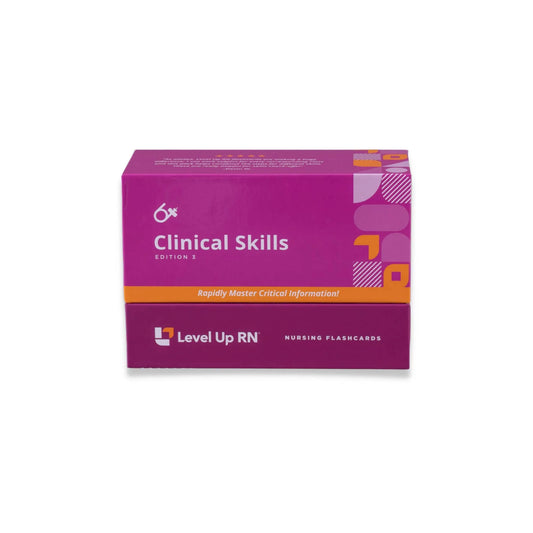Clinical Skills - Nursing Flashcards
This series follows along with our Clinical Nursing Skills Flashcards, which provide step-by-step instructions and best practices for most skills used by practicing nurses and for the skills tested by most nursing schools during the laboratory portion of fundamentals.
What is good hand hygiene?
Good hand hygiene involves using the proper technique to thoroughly wash hands. The following steps should be taken to ensure good hand hygiene, using soap and water.
Remove jewelry
Before washing hands, remove all jewelry, e.g., no rings.
Wet hands and wrists thoroughly
If wearing a watch or long sleeves, make sure that they are pushed up well past the wrist.
Turn on the sink.
With warm water, wet the hands and wrists thoroughly, keeping hands and forearms below the elbows while washing. This allows the water to stream back into the sink, and not up the arms.
How much soap should be used for good hand hygiene?
To practice good hand hygiene 3 – 5 mL of antiseptic soap should be used when washing hands.
What is a good technique for washing hands?
A good technique for washing hands involves rubbing the hands together vigorously for at least 15 seconds, making sure to get between the fingers, under the fingernails, and across finger beds. Make sure to wash thumbs and palms thoroughly.
Consider scratching the palm a little with the fingernails as hands are being washed, to make sure the palms get cleaned.
How to rinse hands and wrists
When ready to rinse, keep the hands tilted down. The water should flow toward the fingertips. This is to prevent the water from running from the hands up the arm.
How to dry hands
Pat hands dry, starting at the fingertips and moving up to the wrists and then the forearms.
What is the proper technique for turning off a faucet?
When turning off a faucet, use a clean, dry paper towel. This prevents coming into contact with the dirty sink. Discard the used paper towel.
Remember not to let any part of the body touch the sink basin
When using a sink to wash hands, make sure no part of the body touches the surface of the sink, including the sink basin.
Do not lean over the sink. This is to keep a distance between tummy and sink. Consider when doing dishes in the kitchen at home and, having leaned into the sink, discovering a line of wetness across your tummy. In a hospital or an acute facility, there are pathogens everywhere, hence the need to keep the body and sink apart.


